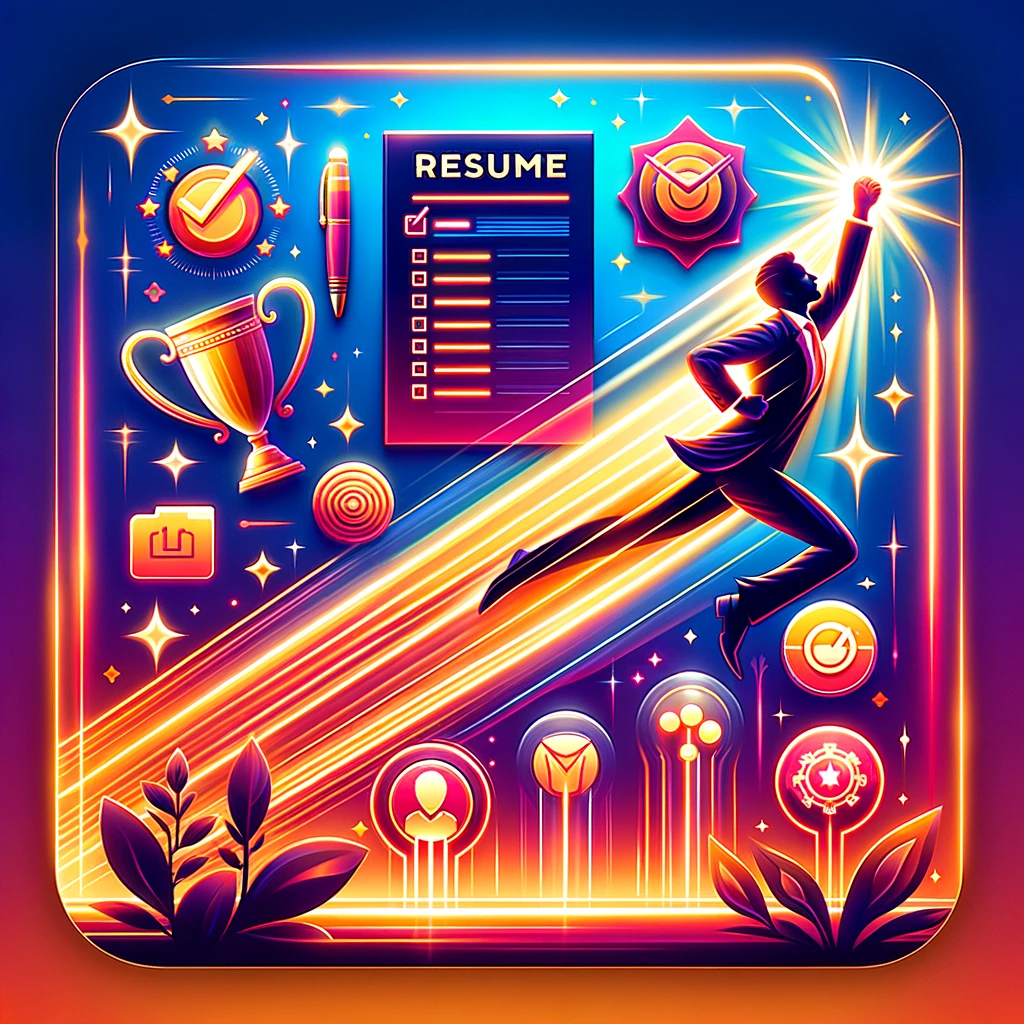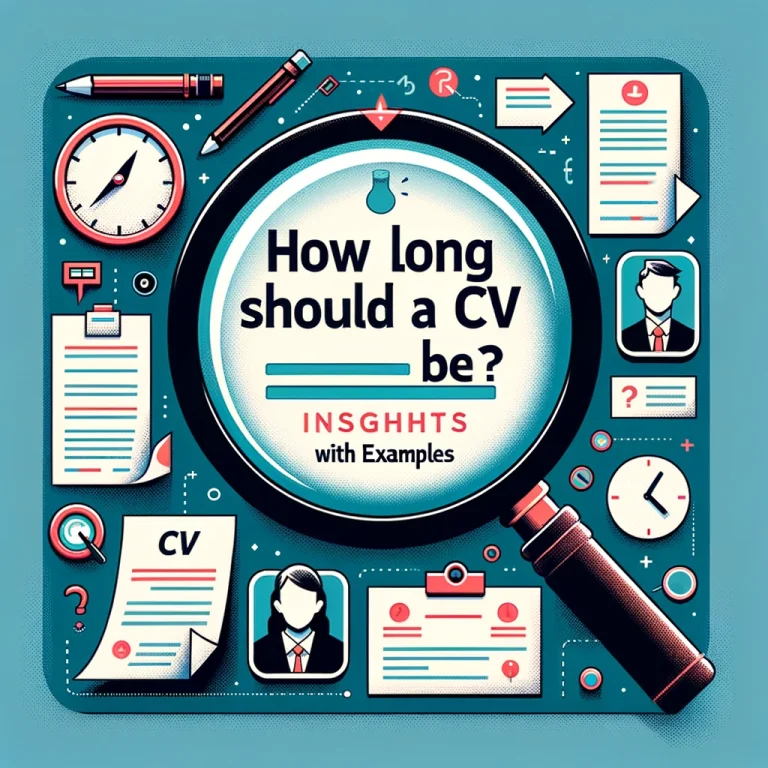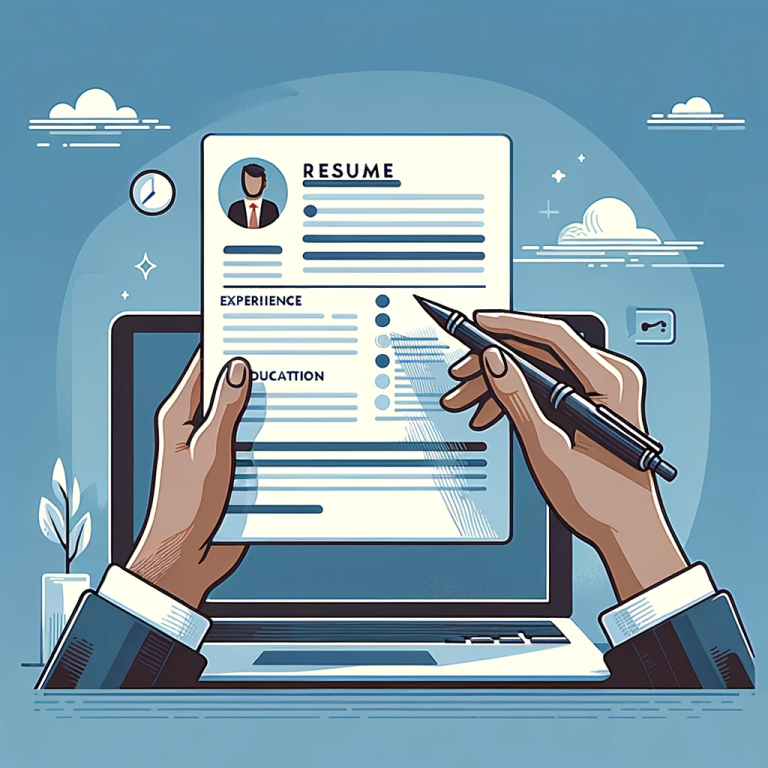11 Essential Resume Tips to Get Seen and Hired Faster
In today’s competitive job market, having a standout resume is more crucial than ever. It’s not just about listing your experiences and education; it’s about crafting a document that quickly catches the eye of both human recruiters and Applicant Tracking Systems (ATS). This guide provides comprehensive resume tips to navigate through the complexities of job applications and secure interviews more efficiently.
Topics that will be covered:
| – What is ATS? – How ATS Filters Resumes |
| – Key Elements of an ATS-Friendly Resume – Keywords: How to Identify and Use Them |
| – Crafting a Compelling Resume Headline – Writing an Engaging Summary |
| – How to List Your Experience – Quantifying Your Achievements |
| – What to Include in Your Education Section – Continuing Education and Certifications |
| – Hard Skills vs. Soft Skills – Tailoring Your Skills to the Job Description |
| – Why One-Size-Fits-All Doesn’t Work – Tips for Customizing Your Resume for Each Application |
| – Keeping It Professional – Using Design to Enhance Readability |
| – The Role of the Cover Letter – How to Align Your Cover Letter with Your Resume |
| – Cleaning Up Your Online Image – Optimizing Your LinkedIn Profile for Job Searches |
| – The Importance of Professional Networking – How to Seek and Use Referrals |
| – After the Application: The Follow-Up – Crafting an Effective Follow-Up Email |
| – From Resume to Interview: Seamless Transition – Tips for Preparing for the Interview |
| – Identifying Your Soft Skills – How to Showcase Soft Skills |
| – Top Mistakes to Avoid – Proofreading and Getting Feedback |
| – When to Consider Professional Help – Choosing the Right Service |
What is ATS?
Applicant Tracking Systems are software applications that enable the electronic handling of recruitment needs. They are used by employers to collect, sort, scan, and rank the job applications they receive for their open positions.
related post: https://prosumely.com/how-to-optimize-your-resume-for-ats-in-2024/

How ATS Filters Resumes
An ATS filters resumes based on certain criteria, including keywords, skills, former employers, educational background, and more. Understanding how these systems work is the first step to ensuring your resume doesn’t get filtered out before a human ever sees it.
Crafting an ATS-Friendly Resume
Key Elements of an ATS-Friendly Resume
To make your resume ATS-friendly, focus on simplicity in formatting, use standard headings, and ensure your document is error-free.
To read more: https://prosumely.com/10-key-elements-of-an-effective-ats-friendly-cv/
Keywords: How to Identify and Use Them
Identify keywords from the job description and incorporate them into your resume. This strategy increases the chances of your resume matching the job criteria.
related post: https://prosumely.com/keywords-for-ats-resume-500-examples/
The Power of a Strong Headline and Summary
Crafting a Compelling Resume Headline
Your resume headline should be a brief yet powerful statement that highlights your value proposition to potential employers.
Writing an Engaging Summary
The summary section should offer a snapshot of your professional background, key achievements, and skills.
Related post: https://prosumely.com/how-to-write-an-impactful-career-summary-in-resume-with-examples/
Professional Experience and Achievements
How to List Your Experience
Present your experience in reverse chronological order, emphasizing your achievements and the impact you made in previous roles.
Quantifying Your Achievements
Whenever possible, quantify your achievements with numbers, percentages, or specific outcomes to provide a clear picture of your contributions.
Related post: https://prosumely.com/how-to-write-quantified-statements-in-resume-30-examples/
Educational Background
What to Include in Your Education Section
List your highest degree first, followed by subsequent degrees or certifications relevant to the job you’re applying for.
Continuing Education and Certifications
Including continuing education and certifications can set you apart from other candidates by showing your commitment to your professional development.
Skill Set Optimization
Hard Skills vs. Soft Skills
While hard skills are necessary for performing specific job functions, soft skills like communication and teamwork are equally important.
Tailoring Your Skills to the Job Description
Match your skill set with the job description to show you have the exact skills needed for the position.
Related post: https://prosumely.com/most-important-soft-skills-for-professionals/
The Importance of a Customized Resume
Why One-Size-Fits-All Doesn’t Work
A customized resume speaks directly to the job you’re applying for, significantly increasing your chances of getting noticed.
Tips for Customizing Your Resume for Each Application
Highlight experiences and skills that are most relevant to the job. This may mean you have multiple versions of your resume.
Design and Layout Considerations
Keeping It Professional
Stick to professional fonts and a clean layout to ensure your resume is easily readable.
Using Design to Enhance Readability
Strategic use of bolding, bullet points, and spacing can make your resume more appealing and easier to read.
Cover Letter Strategies
The Role of the Cover Letter
A cover letter allows you to go into more detail about your experiences and interest in the position.
Related post:
How to Align Your Cover Letter with Your Resume
Ensure your cover letter complements your resume by highlighting key experiences and skills that are relevant to the job.
Related post: https://prosumely.com/how-to-write-a-cover-letter-that-gets-an-interview-call-with-templates/
Online Presence and LinkedIn Profile
Cleaning Up Your Online Image
Employers often research candidates online. Ensure your online presence is professional and aligns with your career goals.
Optimizing Your LinkedIn Profile for Job Searches
A well-optimized LinkedIn profile can be a powerful tool in your job search, acting as your digital resume.

Networking and Referrals
The Importance of Professional Networking
Building a professional network can provide valuable referrals and insights into the job market.
How to Seek and Use Referrals
Leverage your professional network for referrals. A referral can significantly increase your chances of landing an interview.
Related post: https://prosumely.com/how-to-build-a-strong-professional-network/
Follow-Up Techniques
After the Application: The Follow-Up
A polite follow-up email can show your continued interest in the position and keep you top of mind for the recruiter.
Crafting an Effective Follow-Up Email
Keep your follow-up email concise, polite, and professional. Reiterate your interest and qualifications for the position.
Interview Preparation
From Resume to Interview: Seamless Transition
Your resume got you the interview; now ensure your interview performance is just as compelling.
Tips for Preparing for the Interview
Research the company, rehearse your answers to common interview questions, and prepare questions of your own.
To read more: https://prosumely.com/best-interview-tips-and-tricks/
The Role of Soft Skills in Your Resume
Identifying Your Soft Skills
Reflect on your interpersonal skills, adaptability, and problem-solving abilities.
How to Showcase Soft Skills
Incorporate examples of your soft skills into your professional experience and achievements sections.
Avoiding Common Resume Mistakes
Top Mistakes to Avoid
Common mistakes include typos, using an unprofessional email address, and including irrelevant information.
Proofreading and Getting Feedback
Always proofread your resume multiple times and consider getting feedback from mentors or professionals in your field.
Using Resume Writing Services
When to Consider Professional Help
If you’re struggling to land interviews, a professional resume writer can provide the expertise needed to improve your resume.
Choosing the Right Service
Research and choose a resume writing service that has a good reputation and specializes in your industry.

Conclusion
Your resume is your first impression on potential employers. By following these resume tips, you’ll ensure that your resume not only gets seen but also makes a strong case for why you’re the best candidate for the job.
FAQs
- How often should I update my resume? Updating your resume should be a regular activity, not just when you’re actively seeking a new job. A good rule of thumb is to review and update your resume at least once a year or whenever you achieve a significant milestone in your career, such as completing a major project, earning a promotion, or acquiring a new skill. This ensures your resume remains current and ready for any unexpected opportunities or networking prospects that may arise.
- Can a cover letter make a difference even if it’s optional? Absolutely. A cover letter provides a unique opportunity to personalize your application, highlight key achievements, and demonstrate your enthusiasm for the role. It allows you to explain in more detail how your experiences align with the job requirements and the company’s goals. Even if it’s optional, submitting a well-crafted cover letter can set you apart from other candidates who chose not to send one, showing your commitment and interest in the position.
- What’s the best way to include keywords without keyword stuffing? The best approach is to integrate keywords naturally within the context of your accomplishments and skills. Instead of simply listing keywords, use them to describe your experiences and achievements. For instance, if “project management” is a keyword, you might mention a specific project you managed, highlighting the skills and outcomes: “Led a team of 10 in a successful project management initiative, resulting in a 20% increase in efficiency.” This method demonstrates your qualifications in a meaningful context.
- How long should my resume be? The ideal length for a resume is one to two pages, depending on your level of experience. If you’re early in your career, strive to keep your resume to one page, focusing on your most relevant experiences and skills. For those with extensive experience, two pages can provide the space needed to detail your professional history adequately. The key is relevance and conciseness—every item on your resume should serve a purpose and add value to your application.
- Is it worth including hobbies and interests on my resume? Including hobbies and interests can be worthwhile if they are relevant to the job or demonstrate transferable skills. For example, hobbies that showcase leadership, creativity, or teamwork can be appealing to employers. However, space on your resume is valuable, so include hobbies and interests only if you have extra space after detailing your professional experiences and skills. Always prioritize information that directly relates to the job.
- How can I make my resume stand out in a crowded job market? To make your resume stand out, focus on tailoring it to each specific job application, highlighting achievements that demonstrate measurable impact, and using a clean, professional layout. Use powerful action verbs to start each bullet point, quantify your achievements, and include keywords from the job description. Additionally, a unique personal branding statement or a professional summary at the beginning can capture the recruiter’s attention. Lastly, ensuring your resume is ATS-friendly will help increase your chances of making it through to the interview stage.
Need help with your resume? Our Top professional resume writers can assist you! Get your free resume review today!
for more information visit our website- www.prosumely.com







